
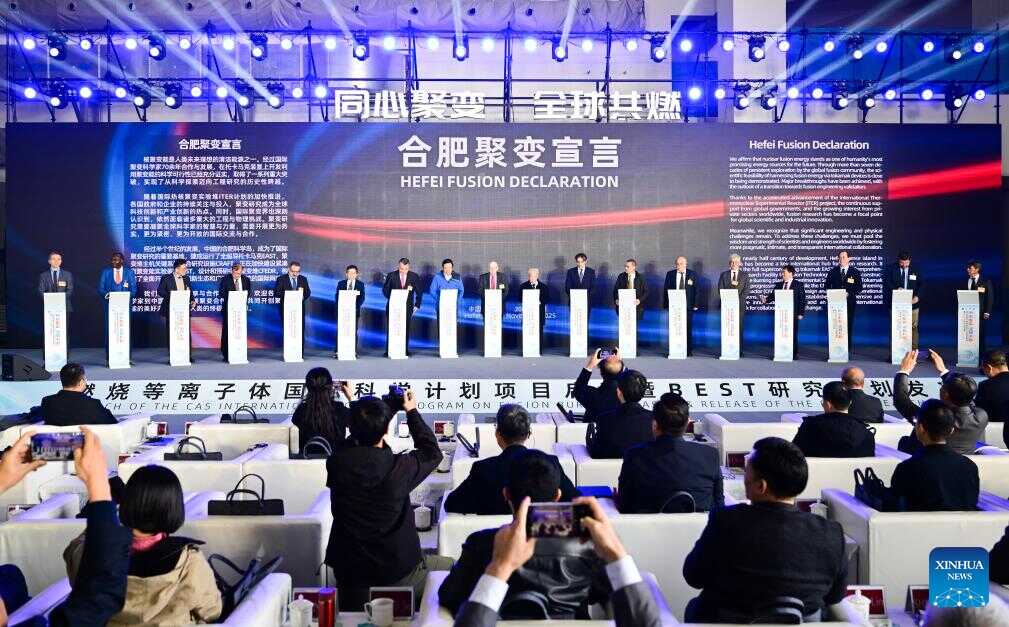
Fusion scientists from more than 10 countries sign the Hefei Fusion Declaration during the launch of the CAS International Science Program on Fusion Burning Plasma and the release of the BEST Research Plan in Hefei, east China's Anhui Province, on Nov. 24, 2025. (Xinhua/Zhou Mu)
China on Monday launched an international science program focused on fusion burning plasma research in Hefei, capital of east China's Anhui Province, opening several major fusion research platforms to global scientists for joint scientific advancements.
This international program, initiated by the Chinese Academy of Sciences' Institute of Plasma Physics, will provide global access to the country's multiple major fusion research platforms, including the Burning Plasma Experimental Superconducting Tokamak (BEST) facility in Hefei.
At the launch event, fusion scientists from more than 10 countries, including France, the United Kingdom and Germany, jointly signed and released the Hefei Fusion Declaration to promote open science and encourage researchers worldwide to join in fusion research efforts in China.
Fusion energy, which replicates the sun's power generation process, is hailed as an ideal clean energy source. For decades, scientists have used techniques like magnetic confinement to create the extreme conditions required for fusion.
"We are about to enter a new stage of burning plasma, which is critical for future fusion engineering," said Song Yuntao, vice president of the Hefei Institutes of Physical Science and director of ASIPP. "A burning plasma is like a flame sustained by the heat generated within the fusion reaction itself, forming the foundation for continuous power generation," he explained.
In recent years, China's fusion research has accelerated, repeatedly breaking world records. As China's next-generation "artificial sun," the BEST device is scheduled for completion by the end of 2027. It will conduct deuterium-tritium burning plasma experiments targeting 20 to 200 megawatts of fusion power and achieving net energy gain.
Song noted that this is a step into uncharted territory, with major engineering and physics challenges.
"The new international program draws on China's superconducting tokamak strengths and brings global expertise together to address the frontiers of fusion-burning physics," he added. (Xinhua)

EUROfusion program manager Gianfranco Federici delivers a speech during the launch of the CAS International Science Program on Fusion Burning Plasma and the release of the BEST Research Plan in Hefei, east China's Anhui Province, on Nov. 24, 2025. (Xinhua/Zhou Mu)
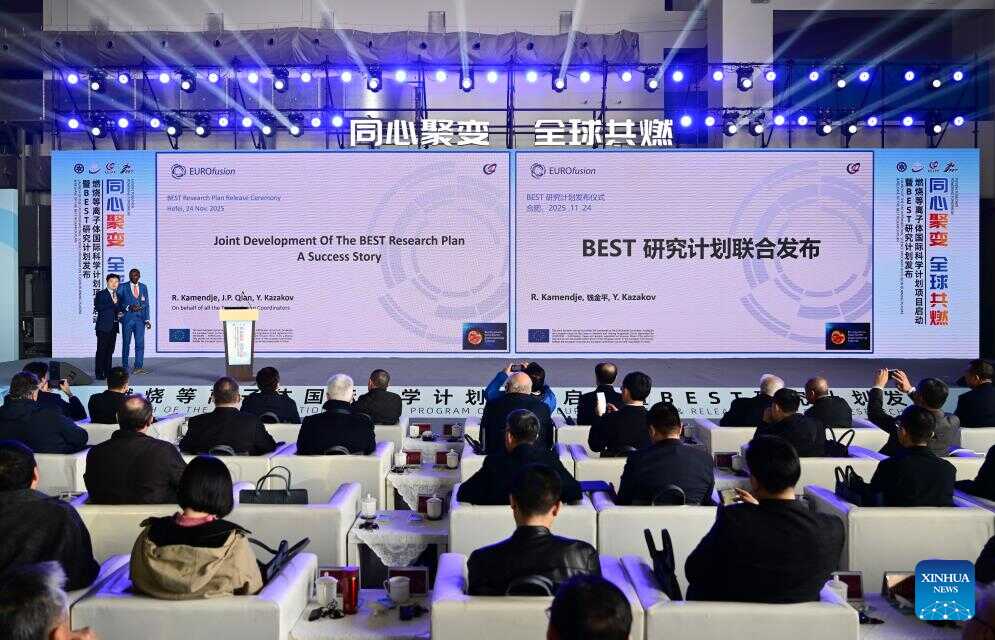
The BEST Research Plan is released in Hefei, east China's Anhui Province, on Nov. 24, 2025. (Xinhua/Zhou Mu)
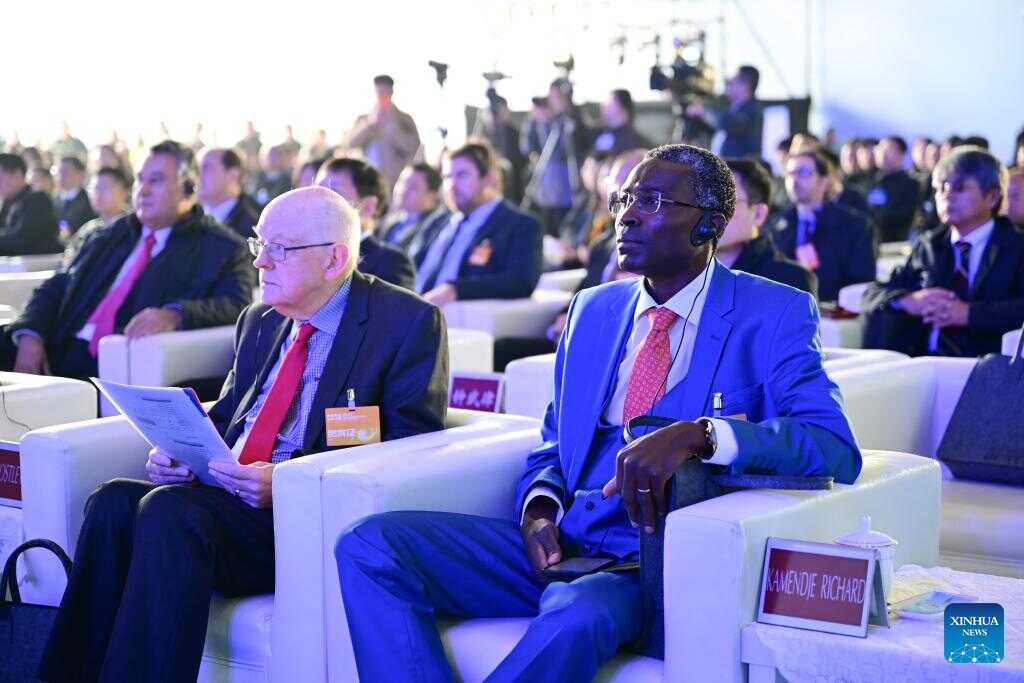
Guests attend the launch of the CAS International Science Program on Fusion Burning Plasma and the release of the BEST Research Plan in Hefei, east China's Anhui Province, on Nov. 24, 2025. (Xinhua/Zhou Mu)

Song Yuntao, vice president of the Hefei Institutes of Physical Science and director of the Chinese Academy of Sciences' Institute of Plasma Physics (ASIPP), presents a report during the launch of the CAS International Science Program on Fusion Burning Plasma and the release of the BEST Research Plan in Hefei, east China's Anhui Province, on Nov. 24, 2025. (Xinhua/Zhou Mu)
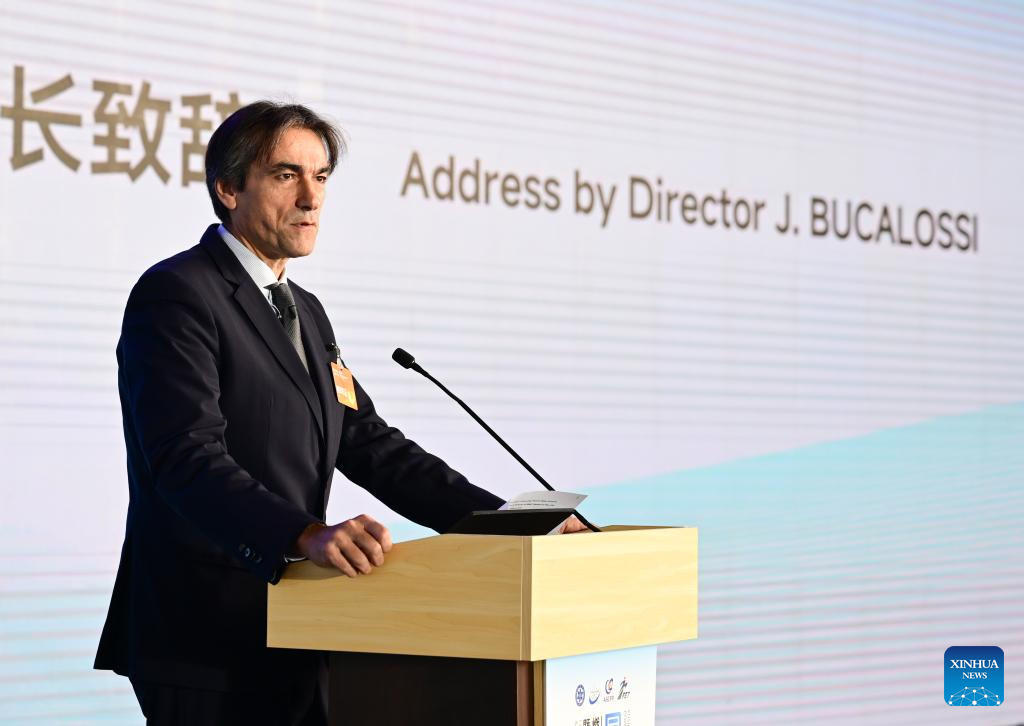
Jerome Bucalossi, director of the Institute for Research into Fusion by Magnetic Confinement at the French Alternative Energies and Atomic Energy Commission (CEA), delivers a speech during the launch of the CAS International Science Program on Fusion Burning Plasma and the release of the BEST Research Plan in Hefei, east China's Anhui Province, on Nov. 24, 2025. (Xinhua/Zhou Mu)
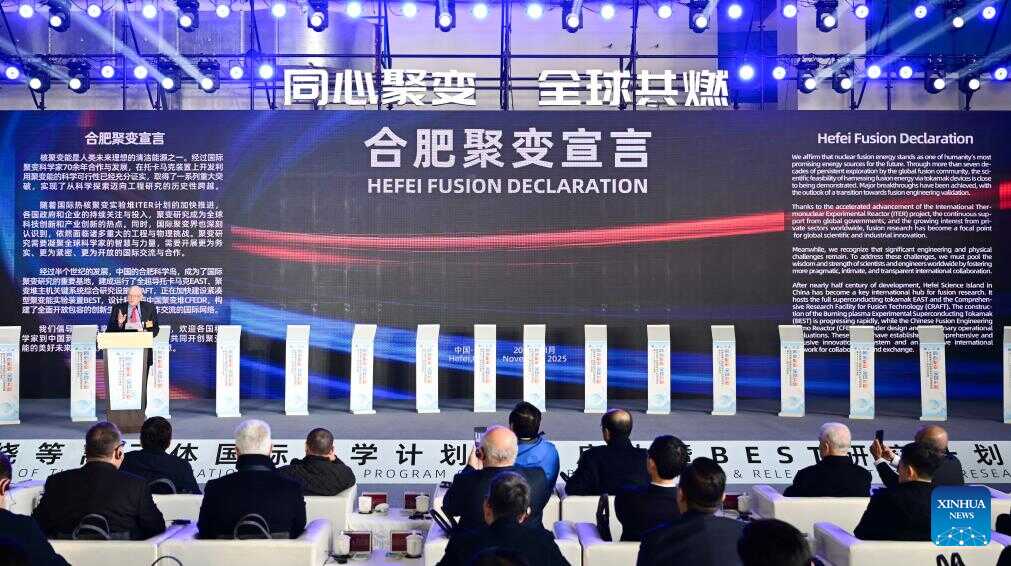
British scientist Alan Costley reads out the Hefei Fusion Declaration during the launch of the CAS International Science Program on Fusion Burning Plasma and the release of the BEST Research Plan in Hefei, east China's Anhui Province, on Nov. 24, 2025. (Xinhua/Zhou Mu)
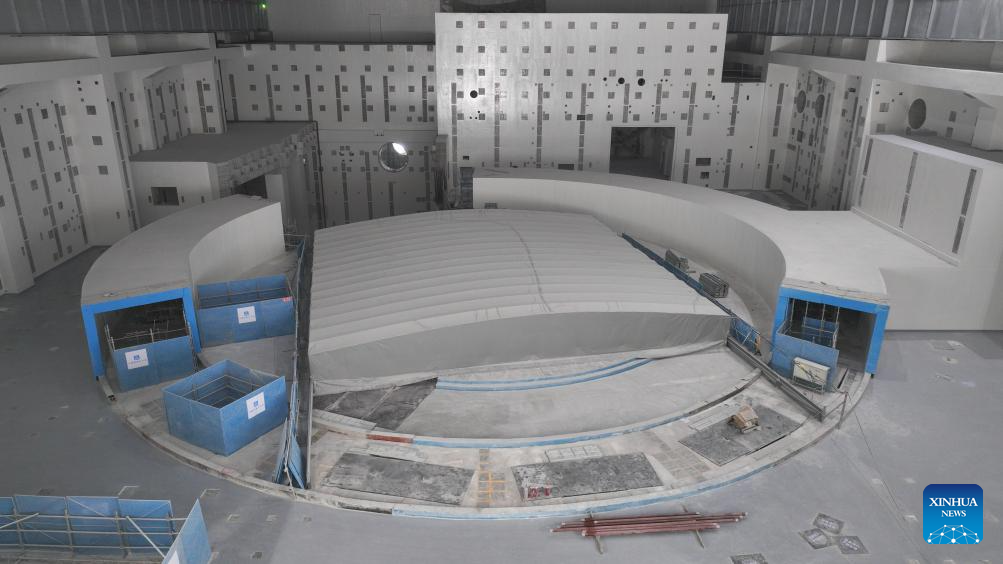
An aerial drone photo taken on Nov. 24, 2025 shows the construction site of the Burning Plasma Experimental Superconducting Tokamak (BEST) in Hefei, east China's Anhui Province. (Xinhua/Zhou Mu)
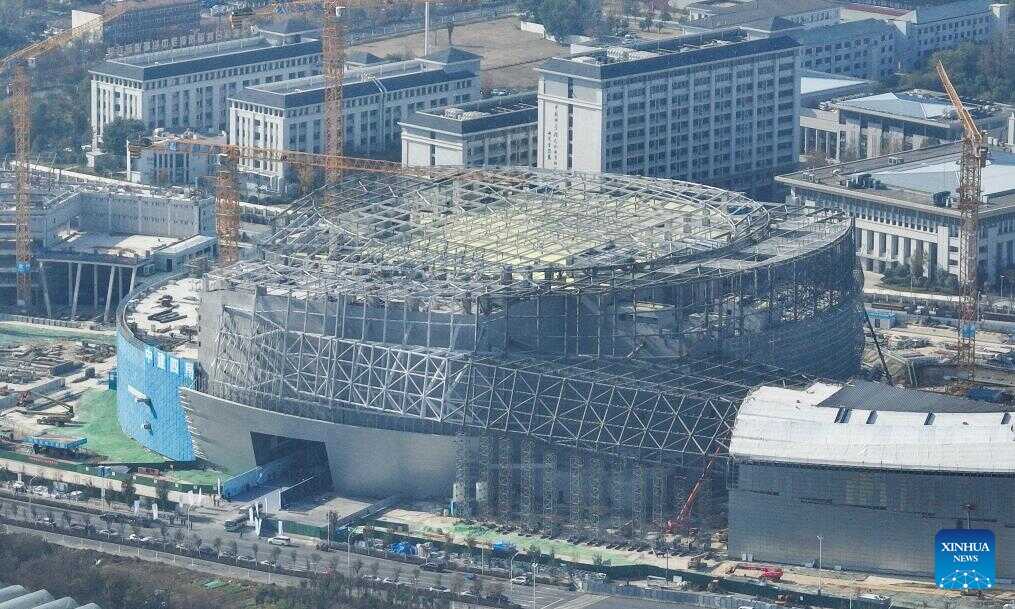
An aerial drone photo taken on Nov. 24, 2025 shows the construction site of the Burning Plasma Experimental Superconducting Tokamak (BEST) in Hefei, east China's Anhui Province. (Xinhua/Zhou Mu)

An aerial drone photo taken on Nov. 24, 2025 shows the construction site of the Burning Plasma Experimental Superconducting Tokamak (BEST) in Hefei, east China's Anhui Province. (Xinhua/Zhou Mu)

86-10-68597521 (day)
86-10-68597289 (night)

52 Sanlihe Rd., Xicheng District,
Beijing, China (100864)

